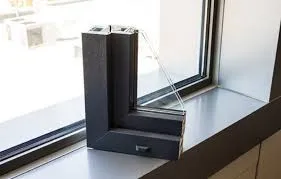decorative wrought iron
The Timeless Appeal of Decorative Wrought Iron
Wrought iron has long been celebrated for its beauty, strength, and versatility in various design applications. The term wrought means worked, and this type of iron is created through an intensive process that involves heating and hammering the metal into intricate shapes. Decorative wrought iron has especially found its place in architecture and interior design, serving as both functional elements and artistic accents. This article delves into the history, characteristics, and various applications of decorative wrought iron, showcasing its timeless charm.
A Glimpse into History
Wrought iron's story dates back to ancient times, with its origins believed to be in the Middle East around 3000 BC. However, it wasn't until the early Middle Ages that its decorative potential began to be recognized. Blacksmiths started to enhance their craft, creating not just practical tools but also ornate pieces and architectural elements. During the Renaissance, wrought iron flourished as a decorative medium, with artisans producing intricate gates, railings, and balconies adorned with elaborate motifs.
In the subsequent centuries, particularly in the 18th and 19th centuries, wrought iron became synonymous with the elegance of the Victorian era. It adorned buildings, gardens, and public spaces, showcasing elaborate designs that reflected the prosperity of the time. Today, wrought iron retains its relevance, seamlessly transitioning into modern design paradigms while maintaining its historical essence.
Characteristics of Wrought Iron
What sets wrought iron apart from other metals is its unique composition and working characteristics. Unlike cast iron, which is brittle and can break under stress, wrought iron is malleable and ductile, allowing it to be easily forged into complex shapes. This quality has made it a favorite among artisans and designers for creating intricate scrolling patterns, floral designs, and decorative motifs.
Additionally, wrought iron boasts incredible durability. It can withstand harsh weather conditions, making it ideal for outdoor applications such as gates and garden furniture. The metal develops a protective patina over time, adding to its appeal and ensuring that each piece has its own unique character.
Applications in Design
decorative wrought iron

The applications of decorative wrought iron are vast, spanning numerous areas of design. Here are some of the most popular uses
1. Gates and Fencing One of the most common applications of wrought iron is in gates and fencing. The open designs allow for visibility and airflow while providing security. Homeowners often choose wrought iron for its elegance, as it can be customized to complement architectural styles from modern to traditional.
2. Railings and Balconies Wrought iron railings add a sophisticated touch to staircases and balconies. The intricate designs can serve as a stunning focal point, while also ensuring safety. Designers often incorporate scrollwork and geometric patterns that elevate the overall aesthetic of indoor and outdoor spaces.
3. Furniture Wrought iron is frequently used in furniture design, particularly for tables, chairs, and beds. The combination of wrought iron with wood or glass creates a harmonious balance between strength and lightness, often resulting in beautiful, timeless pieces.
4. Lighting Fixtures Decorative wrought iron lighting fixtures add a dramatic flair to homes and commercial spaces. From chandeliers to wall sconces, these fixtures often feature intricate designs that cast beautiful shadows and create a warm ambiance.
5. Artistic Installations Beyond functional applications, wrought iron is also employed in artistic contexts. Sculptures and decorative wall art made from wrought iron can serve as striking focal points in both indoor and outdoor environments.
Conclusion
The allure of decorative wrought iron lies in its combination of strength, beauty, and versatility. As we continue to embrace both traditional craftsmanship and modern design innovations, wrought iron remains a relevant and cherished material. Whether incorporated into a historic building or a contemporary home, decorative wrought iron adds a sense of elegance and timeless charm that is hard to replicate. Its enduring appeal is a testament to the skill of artisans and the beauty of a material that has withstood the test of time.
-
Wrought Iron Components: Timeless Elegance and Structural StrengthNewsJul.28,2025
-
Window Hardware Essentials: Rollers, Handles, and Locking SolutionsNewsJul.28,2025
-
Small Agricultural Processing Machines: Corn Threshers, Cassava Chippers, Grain Peelers & Chaff CuttersNewsJul.28,2025
-
Sliding Rollers: Smooth, Silent, and Built to LastNewsJul.28,2025
-
Cast Iron Stoves: Timeless Heating with Modern EfficiencyNewsJul.28,2025
-
Cast Iron Pipe and Fitting: Durable, Fire-Resistant Solutions for Plumbing and DrainageNewsJul.28,2025
-
 Wrought Iron Components: Timeless Elegance and Structural StrengthJul-28-2025Wrought Iron Components: Timeless Elegance and Structural Strength
Wrought Iron Components: Timeless Elegance and Structural StrengthJul-28-2025Wrought Iron Components: Timeless Elegance and Structural Strength -
 Window Hardware Essentials: Rollers, Handles, and Locking SolutionsJul-28-2025Window Hardware Essentials: Rollers, Handles, and Locking Solutions
Window Hardware Essentials: Rollers, Handles, and Locking SolutionsJul-28-2025Window Hardware Essentials: Rollers, Handles, and Locking Solutions -
 Small Agricultural Processing Machines: Corn Threshers, Cassava Chippers, Grain Peelers & Chaff CuttersJul-28-2025Small Agricultural Processing Machines: Corn Threshers, Cassava Chippers, Grain Peelers & Chaff Cutters
Small Agricultural Processing Machines: Corn Threshers, Cassava Chippers, Grain Peelers & Chaff CuttersJul-28-2025Small Agricultural Processing Machines: Corn Threshers, Cassava Chippers, Grain Peelers & Chaff Cutters












